A Brand New Payment Standard x402, Enabling Instant Payments for AI Agents
Authors: Sumanth Neppalli and Nishil Ja
Translation: Baihua Blockchain
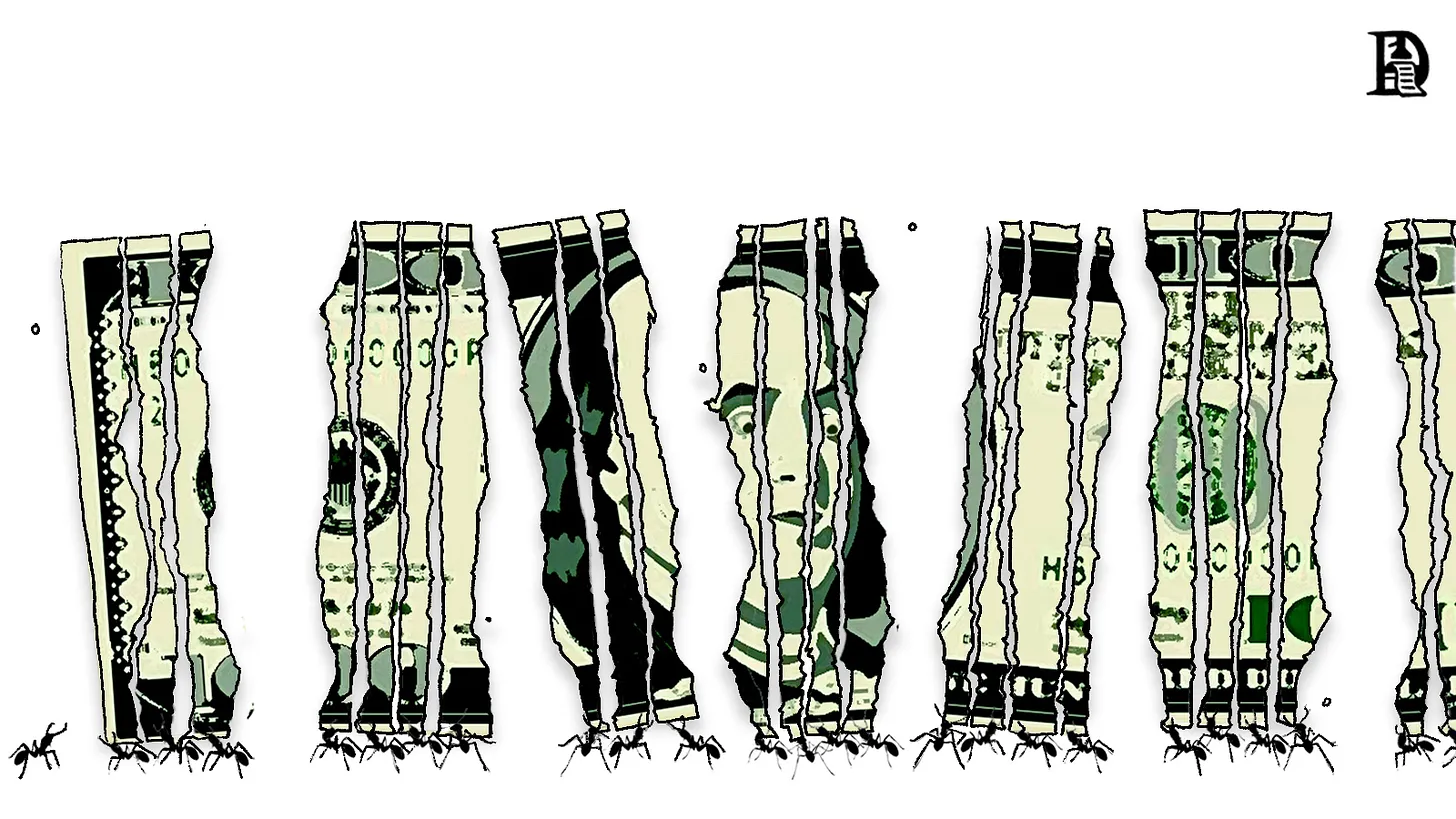
In the cryptocurrency space, there are two distinct schools of thought. As a book, we have the opportunity to closely observe these two perspectives. One believes that everything is the market, and that letting things be priced is the path to gaining a foothold. The other believes that cryptocurrency technology is a better financial technology infrastructure. Our publishing calendar exists in the interval between these two viewpoints, because, like all markets, there is no single truth. We are merely sorting through all possible models.
This article delves into a new standard payment system that is developing online. Simply put, it poses a question: what would happen if you could pay per article? To find the answer, we look back to the early 1990s to see what happened when America Online (AOL) attempted to price internet access. We review how Microsoft priced its SaaS subscription services. Finally, we visit a café where Claude has been pricing conversation minutes based on text volume.
In this process, we explain what x402 is, who the key players are, and what it means for platforms like Substack.
The Disconnect Between Internet Business Models and Our Usage
In 2009, the average American visited over a hundred websites each month. Now, the average user opens fewer than thirty apps per month, but spends more time within those apps. Back then, it was about half an hour a day; now it’s close to five hours.
Winners—Amazon, Spotify, Netflix, Google, and Meta—have become aggregators, gathering demand consumers and turning leisure into habit. They price these habits as subscriptions.
This works because attention follows patterns. Most of us watch Netflix most nights. We order from Amazon weekly. The Prime package includes $139 a year for shipping, returns, and streaming services. Subscriptions eliminate much of the ongoing pain. Amazon is now promoting ads to subscribers to squeeze profits, making users endure ad spending or more fees. When aggregators cannot justify the rationale for subscriptions, they revert to ads, as Google did, monetizing through interruptions.
Let’s look at what is currently flowing through the pipes:
Bots and automation now account for nearly half of web traffic. This is largely due to the rapid adoption of artificial intelligence and large language models (LLMs), making it easier and more scalable for bots to create content.
API requests account for 60% of the dynamic HTTP traffic processed by Cloudflare. In other words, machine-to-machine communication has taken up most of the traffic.
We designed today’s pricing models for human participation in the internet. Now, traffic is machine-to-machine and bursty. Subscriptions change habits. Listening to Spotify on the way to work, using Slack during work hours, watching Netflix at night. Ads are preset—someone is scrolling, clicking, considering. But there are no habits for machine-to-machine, nor any gaze. They have robbery and tasks.
The pricing of content is not only a function of market contracts but also a function of ordinary distribution infrastructure. Music existed in albums because physical media needed bundling. The cost of burning one song or twelve songs on the same CD is nearly the same. Participants need high margins, and booth space is limited. In 2003, when decentralized energy shifted to the internet, iTunes changed the accounting unit to songs. You could buy any song from iTunes on your computer and then sync it to your iPod.
Unbundling increased discovery but also outlined revenue. Most fans buy hit songs rather than ten full tracks, compressing the per-listener revenue for many artists.
Then, when the iPhone emerged, the infrastructure changed again. Cheap cloud storage, 4G, and global CDNs made access to any song instant and smooth. Phones are always online, providing instant access to virtually unlimited songs. Streaming at the access layer re-bundled everything: enjoy all music for $9.99 a month.
Now, music subscriptions account for over 85% of music revenue. This is what Taylor Swift is unhappy about: she is forced to transform Spotify.

Enterprise software follows the same logic. Products are digitized, and vendors can intentionally charge for resources used. B2B SaaS vendors typically offer monthly or yearly predictable service access “per seat” and set limits on features, such as $50/user/month, plus $0.001 per API call.
Subscription themes introduce predictable human usage and measure bursty machine usage.

When AWS Lambda runs your function, you need to accurately pay for the resources you consume. B2B transactions often involve bulk orders or high-value purchases, generating larger transaction scales and significant recurring revenue from smaller, more concentrated user bases. Last year, B2B SaaS revenue reached $500 billion, twenty times that of the music streaming industry.
If most consumption is now machine-driven and bursty, why are we still pricing like it’s 2013? Because the current infrastructure we designed is meant for humans to make occasional choices. Subscriptions have become the default option because once-a-month decisions outweigh a thousand small payments.
This is not simple, as cryptocurrency technology has created the infrastructure that can now support micro-payments. While this is one reason, the internet itself has become a behemoth that requires new ways to use pricing.
Why Micro-Payments Failed
The dream of paying a few cents for content is as old as the internet itself. The Millicent protocol from digital device companies promised transactions below a penny in the 1990s. Chaum’s DigiCash conducted banking actions. Rivest’s paper PayWord addressed the problem of someone learning. Every few years, the same elegant idea is rediscovered: What if we could pay $0.002 per article, $0.01 per song, just covering costs?
They all encountered the same failure: humans hate measuring their enjoyment.
AOL paid a hefty price to understand this in 1995.
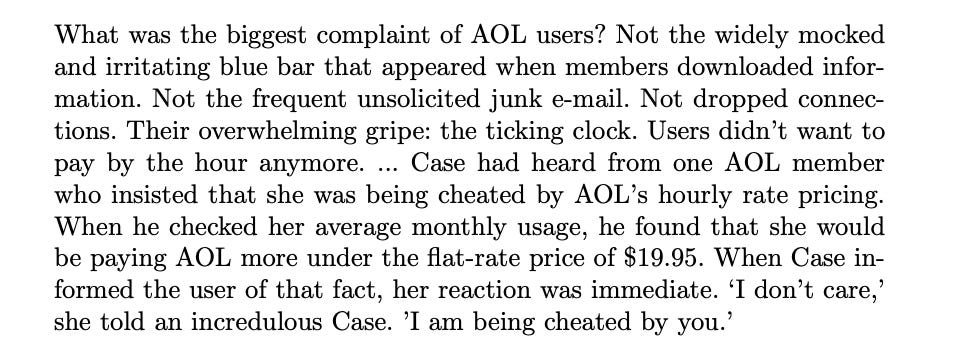
Source - "The Case Against Micro-Payments"
They charged by the hour for dial-up internet usage. For most users, this survey was cheaper than a monthly subscription. However, customers hated it because of the mental burden. Every minute online felt like a running meter, and every click brought a tiny cost. People couldn’t help but accumulate every tiny cost as a “loss,” even if the amount was small. Every click became a tiny decision: is this link worth $0.03?
In 1996, when AOL switched to unlimited usage, usage tripled overnight.
People pay more to reduce thinking. “Paying precisely for what you use” sounds efficient, but for humans, it often feels like anxiety-laden pricing.
Odlyzko summarized in his 2003 paper "The Case Against Micro-Payments": people pay more for fixed-rate plans, not because of their rationality, but because they prefer predictability over efficiency. We would rather pay $30 more for Netflix than optimize every $0.99 title. Later attempts, like Blendle and Google One Pass, tried to charge $0.25 to $0.99 per article but ultimately failed. Unless a significant proportion of the readership converts, unit economics cannot work, and the user experience increases cognitive costs.
Subscription Hell

What is life if not a continuous pain? The gods may also have a subscription model for human existence.
If we crave the simplicity of subscriptions, why are we today complaining about subscription hell? A simple way to think about pricing is to ask how often the product brings pain.
Entertainment has infinite demand. Such a black line represents ongoing pain points, the dreams of users and companies, a floor, predictable, continuous pain curve. This is why Netflix transformed from a quirky DVD rental service to a member of the elite FAANG club. It offered unlimited content and eliminated billing fatigue.
The simplicity of subscriptions has permeated the entire entertainment industry. As Hollywood studios saw Netflix’s stock soar, they began to reclaim their content catalogs, building their own subscription empires: Disney+, HBO Max, Paramount+, Peacock, Apple TV+, Lionsgate, and more.
The fragmentation of content libraries forces users to purchase more subscriptions. If you want to watch anime, you need to subscribe to Crunchyroll. For Pixar movies, you need to subscribe to Disney. Watching content becomes a portfolio-building problem for users.
Pricing depends on two things: how the underlying infrastructure can accurately measure and settle usage, and who must decide the value of each consumption.
One-time payments are very effective for rare, peak events. Buy a movie. Pay a one-time consulting fee. The pain hits hard once and then disappears. This model works when tasks are not only valuable but also have a clear value. In some cases, this pain is even desirable. Stores obviously romanticize our journeys to theaters or bookstores.
When usage is precisely measured, pricing will stick closely to the work unit. That’s why you won’t pay for half a movie. The value there is ambiguous. Figma cannot extract a fixed portion from your monthly stair; creating value is hard to measure.
Even if it’s not the most advantageous way to profit, prepaying monthly fees is easy to shave off.
The calculations are different: the cloud can observe every millisecond. Once AWS can measure execution at this granularity, renting an entire server becomes meaningless. Servers only start when needed, and you pay only while running. Twilio did the same for the telecom industry: one API call, one text snippet, one charge.
Ironically, in places where we can measure perfectly, we still measure as we used to. We run meters on a monthly basis, but the cash flow goes through monthly credit card subscriptions, PDF invoices, or prepaid “credit limits.” To achieve this, each of your vendors puts you through the same ordeal—creating an account, setting up OAuth/SSO for identity, granting API access for authorization, storing a card, setting a monthly cap, and ensuring you won’t be overcharged.
You have tools to preload credit limits. Others, like Claude, will restrict you to a lower model when you reach depletion.
Most SaaS has a green “predictable load” range. It’s overcrowded for instantaneous purchases but too stable to justify accurate per-event measurement. The strategy here is bucketed tiers. You choose a plan that fits your typical monthly usage and upgrade when usage exceeds limits.
Microsoft’s “1TB capacity per user” is an example of this, distinguishing users from heavy users without measuring every file operation. The CFO limits the number of users needing access to higher systems by allocating permissions.
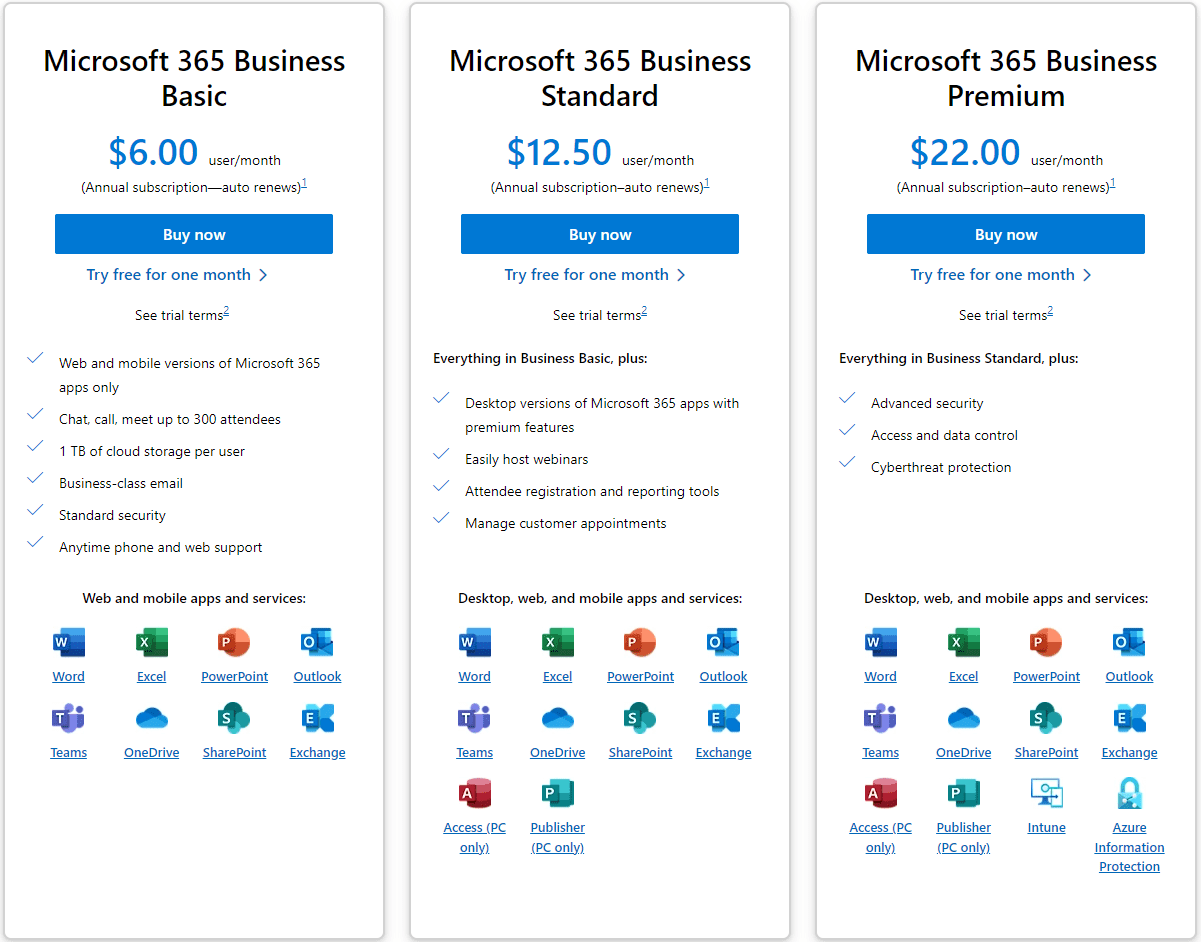
The Confusing Middle Ground
A concise way to organize pricing models is with a two-axis chart, where the x-axis is usage frequency and the y-axis is usage variability. Here, variability means burstiness—how irregular a single user’s usage pattern is over time. Watching Netflix for two hours most nights is low variability; an AI agent firing off 800 API calls in ten seconds, then going quiet, is high variability.

In the lower left corner is one-time purchases. When tasks are rare and predictable, simple “pay as you go” pricing works because you only incur a cost once and then move on.
The upper left corner is chaotic, casual web browsing, with irregular news reading, link jumping, and lower willingness to pay. Subscriptions are redundant, and micro-payments for pay-per-click collapse under decision and transaction friction. Advertising becomes a financing layer, aggregating millions of varied viewpoints. Global advertising revenue has surpassed $1 trillion, with digital advertising accounting for 70% of spending, indicating that most of the web resides in this low-commitment corner.
The lower right corner is where subscription habits make a lot of sense. Slack, Netflix, and Spotify fit into daily human routines. Most SaaS resides here, with tiers separating users from isolated users. Most products offer a freemium layer to encourage users to start using their products, then gradually shift their usage from the upper left to the lower right through daily, stable habits.
Subscriptions account for about $500 billion in global annual revenue.
The upper right corner is the epicenter of the modern internet, including LLM queries, agent actions, serverless bursts, API calls, cross-chain transactions, batch jobs, and IoT device communications. Usage is continuous and irregular. Seat-based fixed fees misprice this reality but lower the psychological barrier to starting payments. With too many paying users and a shortage of heavy users, revenue disrupts actual spending.
This is why seat-based products have always tended to lean towards measurement. Retain the base plan for collaboration and support, but charge for heavy loads. For example, Dune offers a limited credit limit monthly. Small, simple queries are cheap, while running larger queries requires more credit.
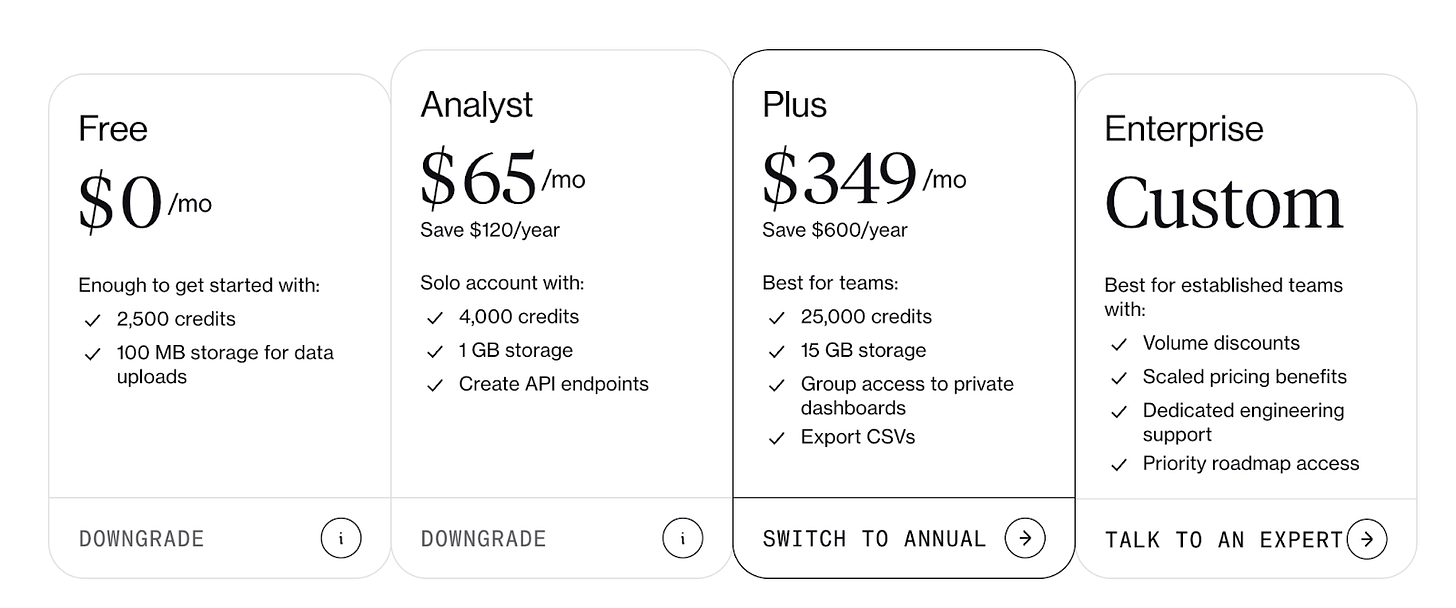 The cloud normalizes the bi-weekly sales of credits proportional to actual workloads for computing, data, and API platforms. It is moving towards linking revenue to the smallest units observable by the network. In 2018, 30% of software was below usage-based pricing. Now, usage-based pricing is approaching 50%, eating into commission-based pricing, while subscriptions still dominate with a 40% relay.
The cloud normalizes the bi-weekly sales of credits proportional to actual workloads for computing, data, and API platforms. It is moving towards linking revenue to the smallest units observable by the network. In 2018, 30% of software was below usage-based pricing. Now, usage-based pricing is approaching 50%, eating into commission-based pricing, while subscriptions still dominate with a 40% relay.
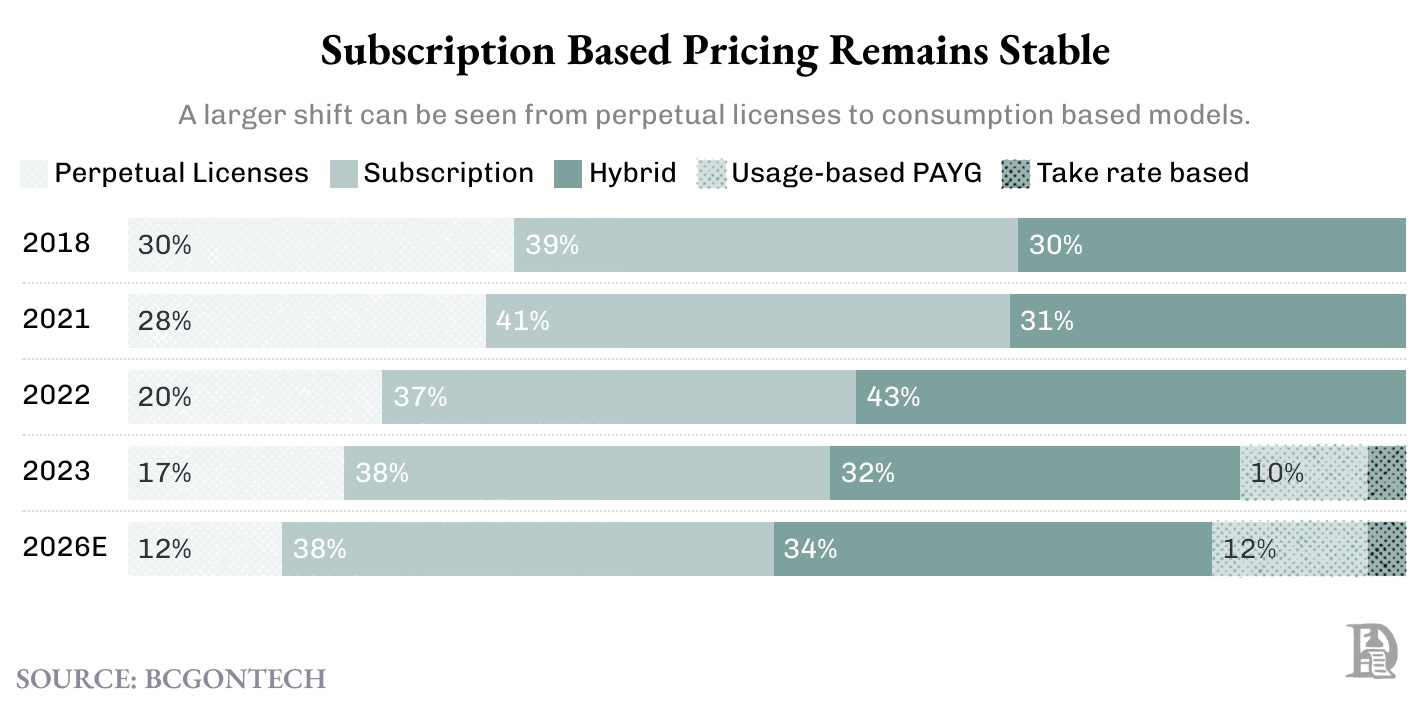
If spending is approaching consumption pounds, the market tells us that pricing hopes to align with work at the same time. Machines are rapidly becoming the largest consumers of the internet, with half of consumers using AI-driven searches. Moreover, the content created by machines now exceeds that created by humans.
The problem is that our infrastructure still relies on annual accounts. Once you successfully register for software, you gain access to their dashboard, which includes API keys, prepaid credit limits, and end-of-month invoices. This is fine for habitual humans; however, it feels clumsy for bursty software. In theory, you could use ACH, UPI, or Venmo for monthly regular statements. However, these require batch processing to use, and their fee structures would collapse under low-cost, high-frequency traffic.
This is the significance of cryptocurrency technology in the internet economy. Currency provides you with the ability to make instant, stable, fine-grained payments down to fractions of a cent. They settle internally, operating on alerts, rather than being directly held by agents, and not being trapped behind bank user interfaces. If usage should be rightly event-based, so should settlement, and cryptocurrency is the first infrastructure capable of keeping up with this reality.
What is x402?
x402 is a payment method used in conjunction with HTTP, adopting the 402 status code as a standard for micro-payment devices over the years.
x402 is a way for sellers to verify that a transaction has been completed. Sellers wishing to accept on-chain gas-free payments via x402 must coordinate with intermediaries (service providers) like Coinbase and Thirdweb.
Imagine Substack raising the price of a paid article by $0.50. When you click the “pay to read” button, Substack returns a 402 code containing the price, accepted assets (like USDC), network (like Base or Solana), and strategy. It looks like this:

Your Metamask wallet authorizes the $0.50 by signing a message, submitting it to the intermediary. The intermediary sends the text on-chain and notifies Substack to unlock the article.
Stablecoins make accounting quick. They settle at network speed, in tiny denominations, while consumption is accounted for at each vendor. With x402, you consume pre-funded credit limits for five buckets, rotating API keys across different environments, and you won’t discover a mid-night trigger at 4:00 AM that disrupts your job. Billing can remain where it fits best—on the bill—while all bursts and machine-to-machine paths occur automatically and cheaply.
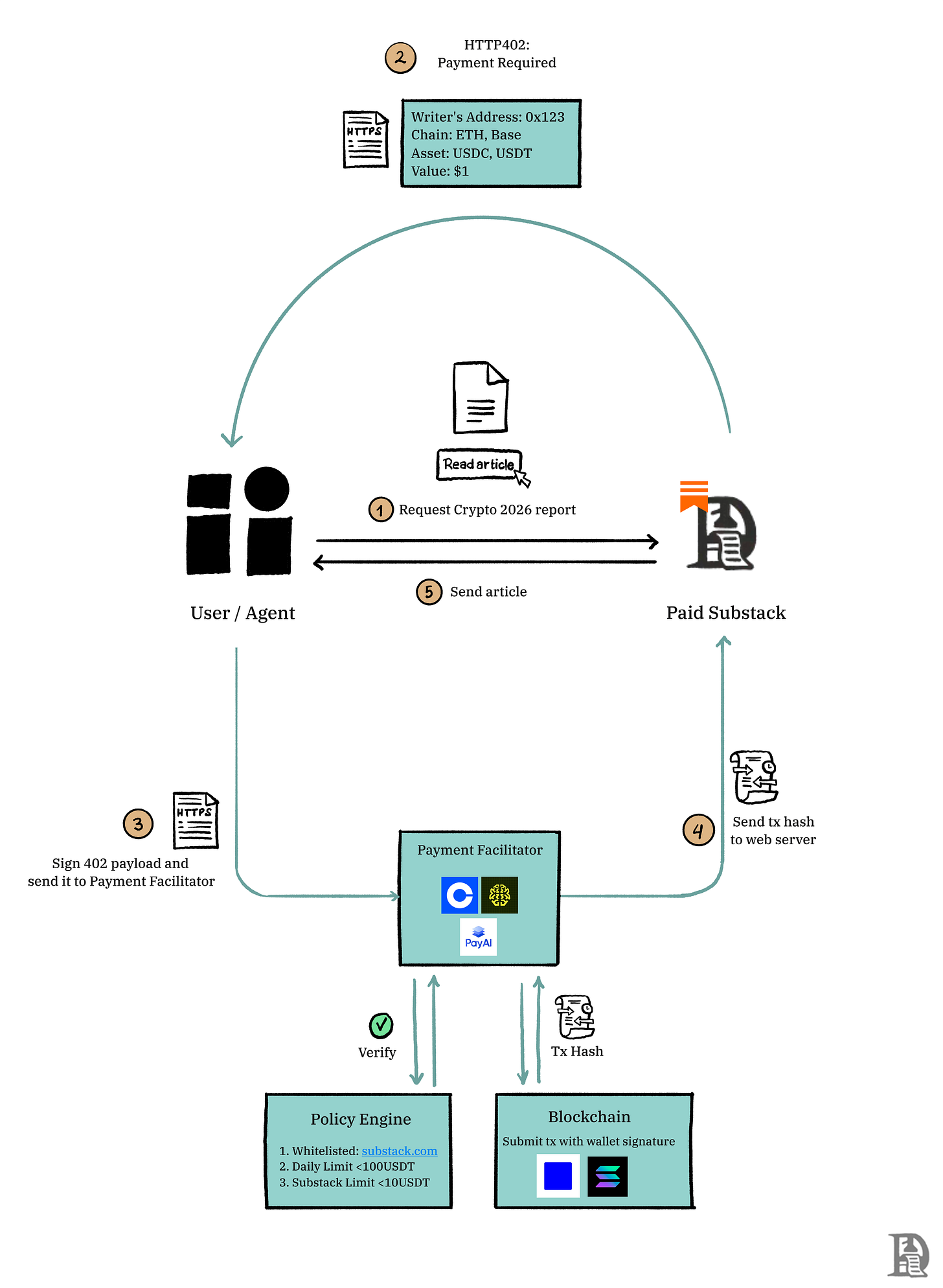
You can implement this differentiation in agent checkout. Suppose you are experimenting with new fashion styles on Daydream (an AI fashion chatbot). Today, the shopping process redirects you to Amazon to pay using saved card details. In a world with x402, the agent understands the context, retrieves the merchant’s address, and pays from your Metamask wallet without leaving the current conversation thread.

The interesting part of x402 is that it is currently not a single entity; it consists of various systems you would expect to find in real infrastructure. Anyone building AI agents through Cloudflare’s Agent Kit can create bots that price based on actions. Payment providers like Visa and PayPal are also adding x402 as supported infrastructure.
QuickNode has a practical guide on how to add an x402 paywall for any endpoint. The direction of development is clear: unify “agent checkout” at the SDK level, making x402 the way for agent API payments, tools, and ultimately retail purchases.
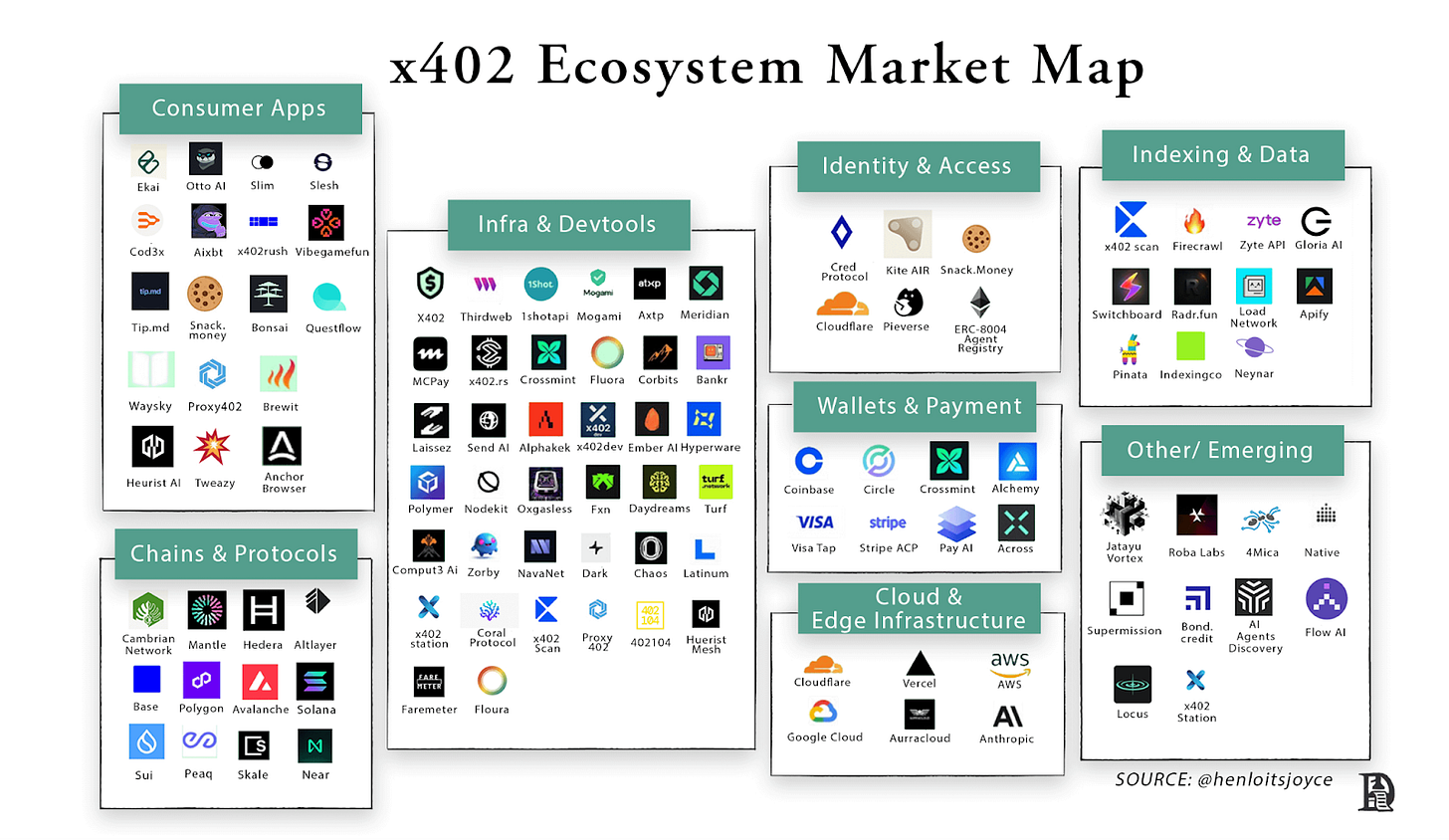
Integrating x402
Once the network supports rebuilding payments, the massive question will be where it takes off first. The answer is in high-frequency usage areas, transaction values below $1. That’s the area where subscriptions charge too much for subscription users. These monthly commitment subscription users pay the minimum subscription amount to start using. As long as blockchain fees are feasible, x402 can settle each request at machine speed, roughly down to $0.01.
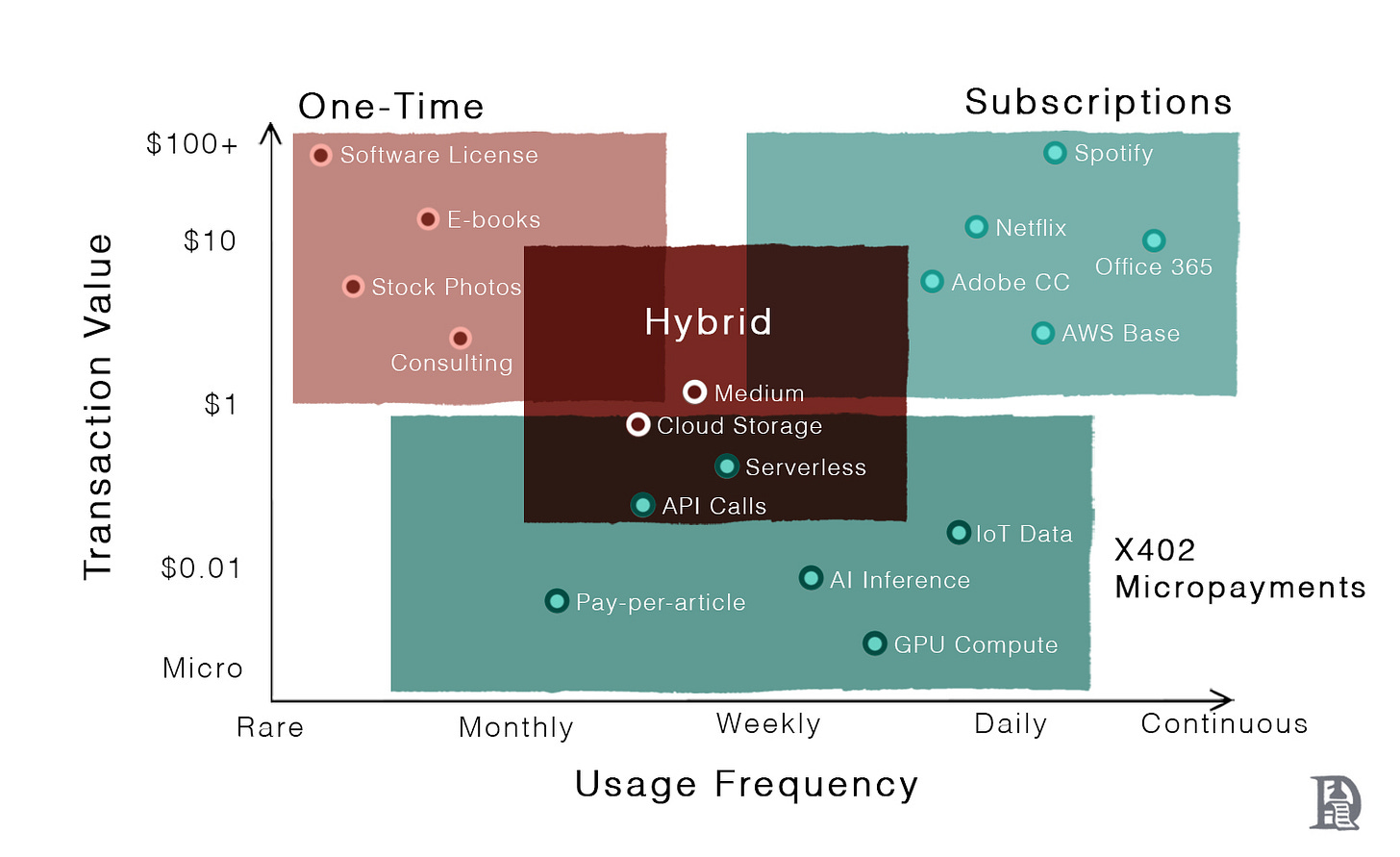
There are two forces making this urgency pressing. On the supply side, the “tokenization of workloads” is exploding—LLM tokens, API calls, search services, IoT pings. Every meaningful action on the modern web now comes with a tiny, machine-inevitable unit. On the demand side, SaaS pricing leads to absurd waste. About one-tenth of licenses are idle because teams prefer to pay per seat, as it is easy to monitor and predict. We measure workloads at a technical level but pay humans at a seat level.

Capped event intervals are a way to align these worlds without scaring buyers. We can set software caps to run at the best price achieved. A news site or developer API charges per request throughout the day and then automatically refunds to a daily set cap.
If The Economist publishes “$0.02/article, capped at $2/day,” an interested reader can browse 180 links while doing mental math.
By midnight, the protocol settles all charges to $2. The same model applies to developer interfaces. News organizations can charge for each LLM crawl to sustain future AI browser revenue. Search APIs like Algolia can charge $0.0008 per query, aggregating daily usage to $3.

You can already see that consumer AI is moving in this direction. When you reach Claude’s message limit, it doesn’t just say, “Limit reached, come back next week.” It offers two paths on the same screen: upgrade to a higher subscription or pay per message to complete what you are doing.
A simple infrastructure is needed to allow agents to automatically make the second choice, pay per request, and then pop up an interface for the user, use a button, or manually upgrade.
For most B2B tools, the actual end state looks like a “subscription base + x402 bursts.” Teams retain a base plan tied to **the number of users for collaboration, support, and backend usage. Occasionally, billing is recalculated through *x402* traffic (building minutes, providing search, image generation), which forces an upgrade to the next system.
Better networks can also connect. ZeroZero aims to sell a faster, clearer internet through dedicated devices. By routing agent traffic through them, you can price by gigabyte with x402, accompanied by clear SLAs and caps. An agent needing low latency for trading, rendering, or model jumps can enter temporarily fast bandwidth, pay for that specific burst, and then exit.
SaaS will accelerate towards usage-based pricing, but with protective measures:
You acquire and activate integrations more cheaply. You can start earning from the first call. “Passerby” developers who never complete OAuth or credit card forms can still pay $0.03. Agents tend to prefer immediately payable vendors.
Revenue grows with the actual usage of seats. This is a way to address the 30-50% seat waste in most organizations. Heavy workloads shift to top-tier bursts.
Pricing becomes a product interface. “Fast lane, an extra $0.002 per request,” “bulk mode half-price increase,” are all ways companies can experiment with revenue outlets.
Locking splits. Consuming integrated work and time reduces the vendor's ability to lower switching costs.
A World Without Ads
Micro-payments won’t completely eliminate advertising; they will shrink the areas where ads are the only applicable model. Ads will still perform well in leisure real estate spaces. x402 prices interfaces that ads cannot infringe upon and situations where someone might occasionally choose to pay for a great article instead of consuming a monthly subscription.
x402 lowers the difficulty of payment; at a certain scale, it could change the future.
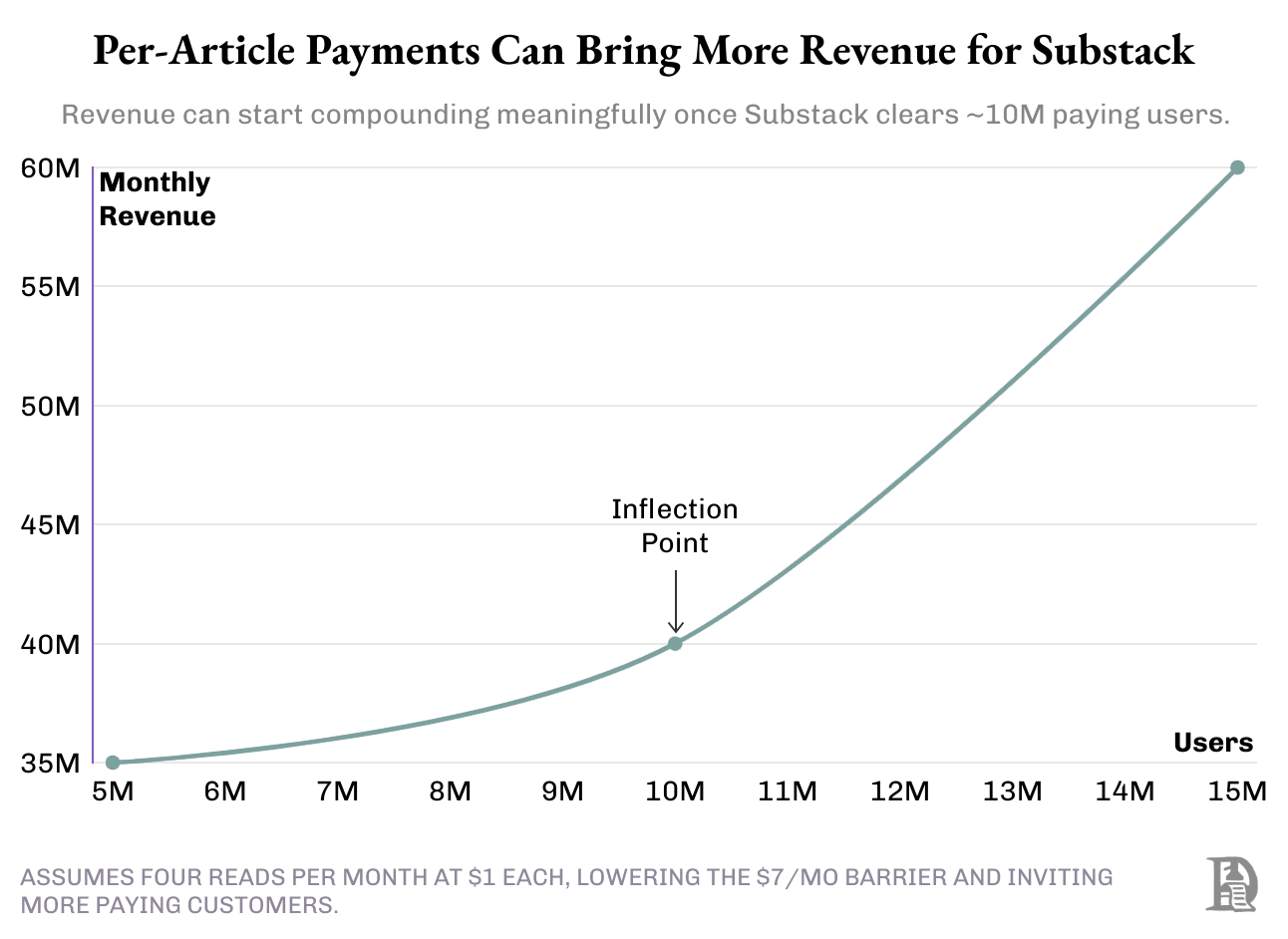
Substack has 50 million users with a 10% conversion rate, resulting in 5 million paying subscribers, each paying about $7 per month. When the paid subscriber base doubles to 10 million, Substack may pay more in the middle tier. With a smaller coefficient, more casual readers can shift to pay-per-part, accelerating the revenue curve.
The logic applies to any seller with high variability and low-frequency sales: when people use a product with different characteristics occasionally, paying per use feels more natural than committing to a long-term plan.
It’s a bit like me going to my local badminton court. I play two to three times a week, usually at different places with different friends. Most courts offer monthly memberships, but I prefer not to bind myself to one location. I like the freedom to decide which court we go to, how many times, and to skip a session when I’m tired.
Don’t get me wrong; I know this varies by person. Some people prefer to stick to the nearest court, some like subscriptions to encourage habit formation, and others might want to share a subscription with friends.
I can’t speak for offline payments, but with x402, this personalization can be digitally embodied. Users can set their payment preferences through strategies, while companies can offer flexible pricing models to accommodate everyone’s habits and choices.
x402 truly shines in agent workflows. If the past decade was about transforming humans into logged-in users, the next decade will be about transforming agents into paying customers.
We’ve come halfway. AI routers like Huggingface allow you to choose among multiple LLMs. OpenAI’s Atlas is an AI browser that runs tasks for you using LLMs. x402 inserts as the payment infrastructure for offloading into that world. It’s a way for software to settle small bills with other software at the final moment of work completion.
However, having infrastructure alone doesn’t create a market. Web2 built an entire scaffolding around card networks. Bank KYC, merchant PCI, PayPal disputes, fraud-related suspensions, and refunds when issues arise. Agent commerce currently lacks these. Stablecoins combined with HTTP 402 provide a payment method for agents, but they also break the built-in recourse that people are accustomed to.
When your smart shopping buys the wrong flight, or your research bot exceeds its data budget, how do you get your money back?
That’s the question we’ll delve into next: how developers can use x402 without worrying about future failures.
Article link: https://www.hellobtc.com/kp/du/11/6140.html
Source: https://www.decentralised.co/p/pricing-the-internet
免责声明:本文章仅代表作者个人观点,不代表本平台的立场和观点。本文章仅供信息分享,不构成对任何人的任何投资建议。用户与作者之间的任何争议,与本平台无关。如网页中刊载的文章或图片涉及侵权,请提供相关的权利证明和身份证明发送邮件到support@aicoin.com,本平台相关工作人员将会进行核查。



